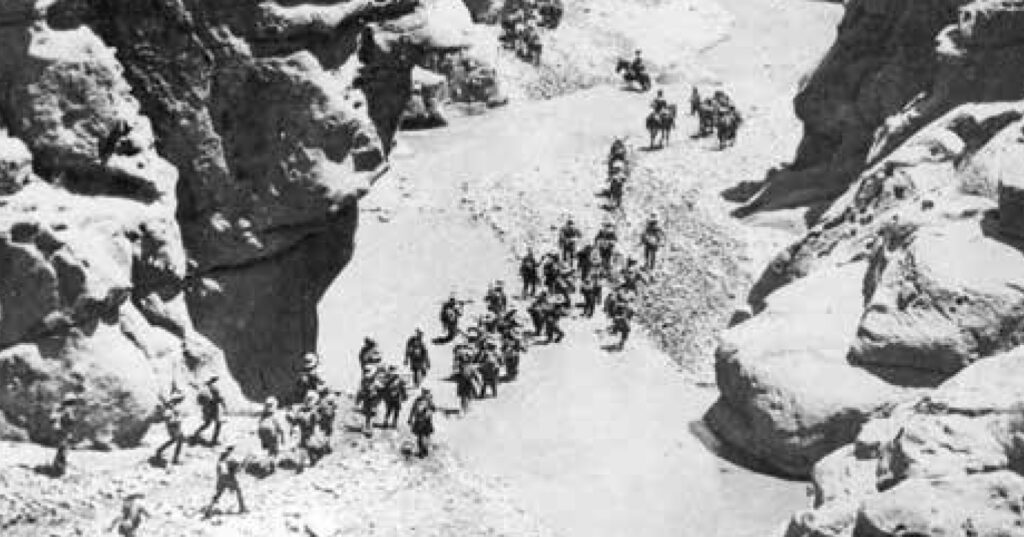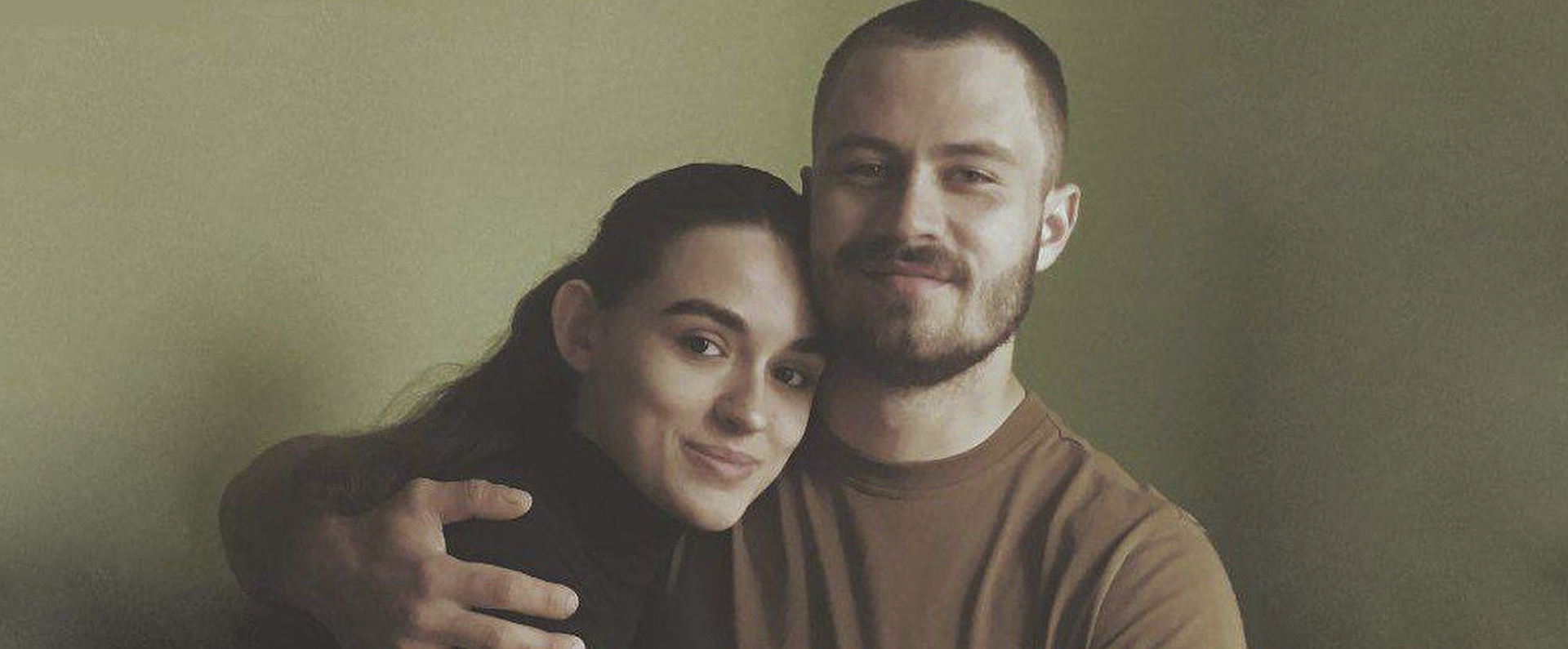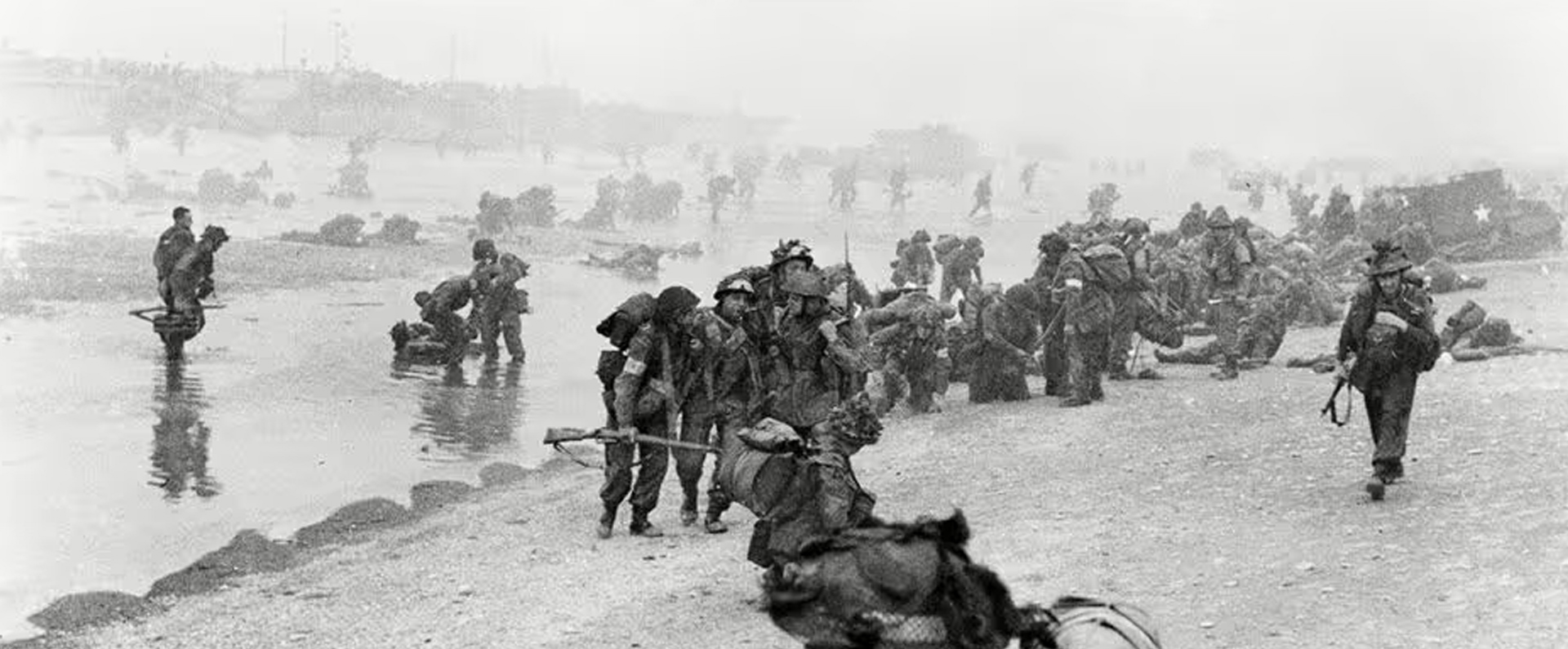
First published in Britain at War in August 2019.
Temporary Captain Henry John Andrews VC, MBE
Henry John Andrews was the recipient of a rare inter-war VC. In fact, between the end of the Great War in November 1918 and the beginning of the Second World War in September 1939, there were just 11 actions that led to Britain and the Commonwealth’s most prestigious gallantry award.
Andrews was born in London in 1873 (more precise details of his birth are not known). His father was the foreman in a cardboard box factory and his mother died shortly after her son’s birth. Both his parents were members of The Salvation Army and his mother’s dying wish was that baby Henry (who became known as “Harry”) should be cared for by Bramwell Booth, the first chief-of-staff and the second general of The Salvation Army.
This wish was complied with although Booth asked his sister, Emma, to help him with the task. In her book It Began With Andrews: The Saga of a Medical Mission, Miriam M. Richards writes: “When he [Booth] promised to care for a dying mother’s baby boy he was not to know that he was cherishing a seed from which would spring a vital harvest in the field of medical mission work.”
Andrews’ early care and education came at The Salvation Army Nursery at Clapton, London, when Emma Booth was the principal of the Officers’ Training Home. As a youth of fifteen, he accompanied the woman he called his “mother” when, having got married, Booth went with her husband, Commissioner Booth-Tucker, to India. Andrews was destined to become The Salvation Army’s first “medical man” in India, eventually serving there for almost thirty years.
His work had started within months of him arriving in Bombay and even though, at the time, he was a teenager and completely unqualified for any kind of medical work. A chance meeting with an Indian boy suffering from acute toothache led to him reading a dental manual and then using sterilized forceps to remove a decaying tooth.
The grateful youngster christened his young healer “the little doctor” and, after returning to his village, word soon spread that Andrews was willing and able to treat those suffering from ailments at his “office”: a small room equipped with a grass mat (on which he slept at night), a floor-level “sink”, a table and shelves that were soon crammed with various lotions and potions that he used to treat malaria, cholera and other diseases that were rife in India.
As his work grew, Indians gave him an alternative name to “little doctor” that of “Dr Sikundar” (sometimes spelt ‘Sekunder’) in honour of a Sikh of that name who had, in turn, been known as “The Brave One”.
Aged only seventeen, Andrews became an officer in The Salvation Army and, as his amateur medical work increased, he eventually received formal training as a pharmacist. Furthermore, he was appointed to assist Major William Stevens at The Salvation Army’s Indian headquarters at Nagercoil. During the 1893 cholera outbreak in Travancore, India, Andrews worked to help the sick and dying. Miriam R. Richards writes: “To see suffering was to him a call to try to remedy it.”
On his return to the UK in 1896, Andrews received training as a dresser, of injuries and wounds. However, he was keen to return to India and he was back in his adopted “homeland” later that year to assist in the establishment of the Catherine Booth Hospital in Nagercoil. Some four years later, he was transferred to Anand in Gujarat where he assisted in the establishment of the Emery Hospital. In October 1899, Andrews had got married in India – in Nagercoil – to Gena Smith, who had shared his childhood home in the Clapton nursery established by his “mother”. Later Andrews underwent further medical training in the USA, graduating from the University of Chicago in 1910, before returning to India in 1912 and serving at Moradabad.
In his book The History of the Salvation Army Volume II 1883-1953, Robert Sandall noted that, after the outbreak of the Great War in August 1914, The Salvation Army was able to place this hospital [Moradabad] at the disposal of the Government together with Dr Andrews and his staff.
Andrews, who was by then a lieutenant colonel in The Salvation Army, volunteered several times for active service but he was turned down because of his superlative work as a hospital commandant. However, in June 1918, he was finally commissioned as a lieutenant in the Indian Army Medical Service and a year later he was promoted to acting captain.
In June 1918 too, he was made an MBE and soon afterwards he was permitted to relinquish his hospital post in order to head to the North West Frontier, where problems continued long after the end of the Great War in November 1918. On 21 October 1919, Andrews, by then aged forty-six, was serving at Khajuri Post, Waziristan, India (now Pakistan). The citation for his VC, announced on 9 September 1920, provides an account of what happened, although the date for his action is incorrect by a single day:
“For most conspicuous bravery and devotion to duty on, the 22nd October, 1919, when as Senior Medical Officer in charge of Khajuri Post (Waziristan) he heard that a convoy had been attacked in the vicinity of the post, and that men had been wounded. He at once took out an Aid Post to the scene of action and, approaching under heavy fire, established an Aid Post under conditions which afforded some protection to the wounded but not to himself.
“Subsequently he was compelled to move his Aid Post to another position, and continued most devotedly to attend to the wounded.
“Finally, when a Ford van was available to remove the wounded, he showed the utmost disregard of danger in collecting the wounded under fire and in placing them in the van, and was eventually killed whilst himself stepping into the van on the completion of his task.”
In his Foreword to Miriam R Richards book, Sir John ‘Jackie’ Smyth, himself a VC recipient and later the President of The Victoria Cross and The George Cross Association, told how he had been present during the action for which Andrews received his posthumous VC. He wrote:
“Temporary Captain Henry John Andrews, M.B.E., had been an officer in The Salvation Army for over thirty years and was therefore not a young man at this time. He was a Senior Medical Officer at Khajuri Post at one end of the Shinki Pass, which was an important defended post on the lines of communication within the area of the 43rd Infantry Brigade of which I was Brigade Major. A very long and important animal transport convoy, over seven miles in length, was on its way up the line. A raiding party of about a hundred Mahsuds, the toughest of all the North-West Frontier tribesmen, had come down the night before and hidden themselves amongst the rocks at the side of the road. They waited until the head of the convoy had reached Khajuri Post and then opened fire, creating great havoc and causing a large number of casualties in men and animals.
“But the officer commanding Khajuri Post had telephoned to Brigade Headquarters and the Brigade Commander sent me off at once with 300 Indian soldiers of the 9th Jats in Ford vans with two rather antiquated armoured cars. On our arrival a very hectic engagement took place in which the Mahsuds were eventually routed. Captain Andrews, quite regardless of his own danger, had only one thought – to collect the wounded, dress them quickly and send them off to safety in some of our Ford vans, which I had put at his disposal. He seemed to bear a charmed life as a number of his assistants were killed or wounded. Just as he was about to step into the last van, however, he was killed.
“I brought his gallantry to the notice of my Brigadier and he was awarded a well-deserved posthumous Victoria Cross. Captain Andrews had acted in accordance with the highest traditions of the Indian Medical Service and also of The Salvation Army.”
A further account of Andrews’ courage that day is provided by Catherine Baird in her booklet ‘Little Doctor’, V.C. (Harry Andrews). She described how, on 21 October 1919, Andrews was determined to go out to help the wounded regardless of the risks to his personal safety. “Making quick, thorough preparations, he went out, dodging bursting shells and stumbling over thick shrubs while the whistling of shells announced their passage through the night. Near a great boulder he built a shelter for the wounded, as sturdy as the urgency of the occasion would allow. He himself had no cover. As the fighting grew more desperate, the shelter had to be moved to another position, but the doctor remained where the danger was most acute. His wiry figure could be seen running here and there, stooping over inert bodies, working swiftly so that, as soon as an ambulance was available, as many as possible could be collected from amid the flying bullets and sent off to safety.
“As he slid the last stretcher into place, a burst of gunfire crackled sharply. The ambulance moved out of a cloud of smoke and started on its way to safety. But the ‘little doctor’ lay still, among the dead, as one overcome with weariness might lie, having fallen asleep at his work.”
Andrews, who died aged forty-six, had in the phrase favoured by The Salvation Army for those who have died, been “promoted to Glory”. He was buried at Bannu Cemetery, India (now Pakistan). His posthumous VC was presented to his widow by George V in an investiture at Buckingham Place on 2 November 1920. His name is commemorated on the Delhi Memorial (India Gate) and there is a painting of him by Joan Fairfax-Whiteside at the Regimental Headquarters of the Royal Army Medical Corps in Camberley, Surrey.
The final word on the remarkable life of Harry Andrews, a man who devoted his life to serving others, should go to a posthumous tribute published in The British Medical Journal. It said: “He was energetic, brimful of vitality, extremely modest, quiet, thorough and reliable, completely unselfish…His goodness infected all those around him…”
I purchased Andrews VC privately in 2008 and I take immense pride in being the custodian of this selfless character’s gallantry medal.
Download a PDF of the original Britain at War article
For more information, visit:
LordAshcroftOnBravery.com


